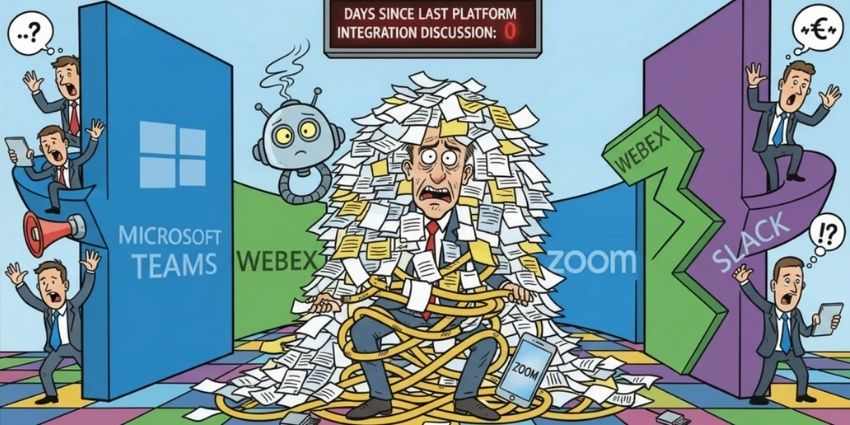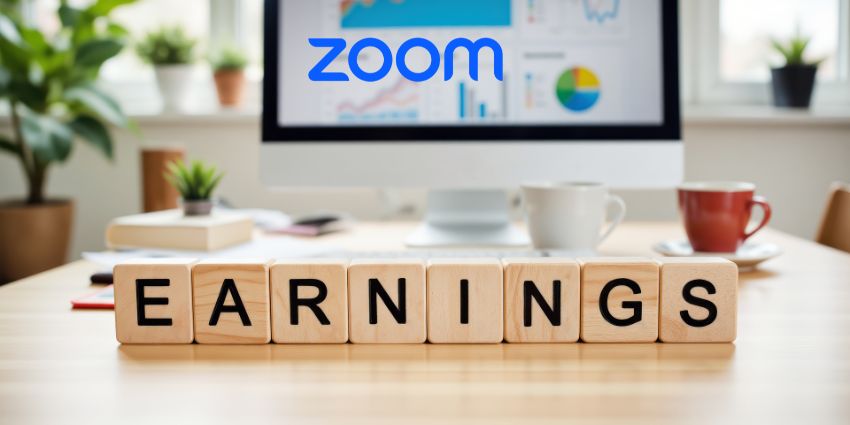Every company understands the importance of customer engagement, but there’s a less obvious crisis that business leaders need to overcome first: fragmented, disconnected teams.
More than 80 percent of the global workforce is deskless; nurses, drivers, warehouse teams, and store associates who keep operations moving but rarely sit at a screen. Yet most business communication tools are still designed for office workers. The result is gaps in coordination, slower responses, and employees who feel disconnected from the mission.
That’s where CPaaS workforce engagement solutions are starting to make their mark. By plugging voice, SMS, WhatsApp, and RCS straight into existing processes, organizations can push real-time alerts directly to the people on the ground. No more missed shift calls buried in voicemail or long chains of unread emails, updates land in the channels that frontline staff already check during the day.
CPaaS Workforce Engagement: Why Legacy Comms Fall Short
The systems most companies still use to reach frontline staff were never designed for the way deskless work actually happens. Email chains, intranet posts, and dusty paging systems are fine if you’re sitting at a desk, but they don’t land with a nurse on a night shift, a driver halfway through a delivery route, or a retail associate rushing between customers.
The stakes are higher than many leaders like to admit. In logistics, a late dispatch update doesn’t just inconvenience a driver; it can disrupt an entire distribution hub and incur thousands in penalties. In healthcare, misrouted messages can delay patient care when every minute counts. Retail managers still rely on group texts or hurried phone trees to cover absences, and anyone who has worked in a store knows how messy that can be.
When official tools fail, people often turn to unofficial alternatives. WhatsApp, Signal, even personal SMS threads. They’re fast, but they leave companies wide open. Regulators have fined global banks billions for failing to capture “off-channel” messages.
This is the context in which CPaaS workforce engagement solutions have emerged. With employee alerts, CPaaS connectors, and APIs, enterprises can replace those patchy, one-way systems with secure, auditable, multi-channel workflows that actually meet the needs of modern deskless worker communication.
Employee Alerts: CPaaS Keeping Teams Connected
Most frontline teams don’t fail because they lack dedication. They struggle because the message never got through. A nurse misses a shift request because it’s buried in email. A driver only hears about a reroute when the delivery’s already late. A retail manager spends an hour calling down a list to cover an absence, while customers wait.
Customizable CPaaS workforce engagement platforms and tools, from real-time notifications to interactive alert systems, are filling that gap. Rather than relying on a single fragile channel, CPaaS integrates SMS, WhatsApp, RCS, voice, and callback options, ensuring the alert reaches its destination quickly. If one route stalls, another takes over. No more crossing fingers that someone checks their inbox before it’s too late.
The difference is clearest in high-pressure moments. With healthcare CPaaS alerts, teams can reach an on-call surgeon through multiple channels until the shift is claimed. In logistics CPaaS use cases, dispatch can push a reroute to dozens of drivers simultaneously and see who acknowledges it, cutting out the guesswork that causes cascading delays. In retail, a shift alert can be confirmed with a single button, filling gaps in minutes rather than hours.
Let’s dive deeper into what CPaaS workforce engagement systems can deliver across industries.
Healthcare CPaaS alerts: On-call, urgent updates, EX
Hospitals don’t slow down. They run 24/7, and any communication gap is immediately apparent. One nurse doesn’t get a shift alert. A consultant isn’t available for an emergency. A clinic cancels an appointment, but the message never reaches the patient. Small breaks in the chain create bigger problems. Legacy systems struggle with this pace.
Pagers still exist, but they’re one-way and unreliable. Phone trees eat up precious time. Email is crowded and rarely checked on the move. That’s why many healthcare teams lean on consumer apps, but those bring compliance headaches and security risks.
Healthcare CPaaS alerts provide a different path. Messages can be sent simultaneously across SMS, WhatsApp, and secure voice channels. If one fails, another delivers. A callback can be triggered automatically if an acknowledgement isn’t received. Every step is logged for audit. When a surgical team needs an extra anesthesiologist, the alert is sent instantly across all channels until someone accepts. When a late-night shift needs to be filled, the system handles the broadcast without a manager working the phones.
The numbers show the impact. NHS Ambulance Services report more than £400,000 saved each year through automated cancellation alerts. Cambridge University Hospitals cut appointment no-shows by over a quarter using CPaaS voice reminders.
For staff, the difference is simple: alerts are clear, targeted, and secure. No guesswork, no endless scrolling through inboxes. For leadership, it means better resource use, stronger compliance, and fewer missed connections.
Logistics CPaaS use cases: Dispatch, rerouting, safety & compliance
In logistics, the breakdown often starts with a message that never landed. A driver gets new routing instructions, but the alert comes after they’ve already passed the junction. A warehouse misses a word about a rescheduled slot. By the time the mistake is discovered, trucks are parked, customers are waiting, and costs are mounting.
Legacy tools can’t keep pace with fleets on the move. Radio calls fade. Phone trees don’t scale. Emails stay unopened while drivers focus on the road.
Logistics CPaaS workforce engagement solutions aim to close those gaps. Alerts can reach drivers through voice broadcasts when they’re behind the wheel, with SMS or WhatsApp follow-ups logged for confirmation. Dispatch can send compliance reminders, hours-of-service checks, and customs requirements across various channels, along with proof of receipt. If a disruption hits, rerouting instructions can be sent to an entire fleet in seconds, acknowledgments tracked as they come in.
Look at DPD, working with Infobip, the company used CPaaS to send real-time delivery notifications and updates to drivers and customers, cutting down on missed handoffs. GoShare, a last-mile delivery platform, tapped Sinch CPaaS to coordinate its gig driver network, sending job offers and status updates instantly across SMS and app channels. In both cases, the value was speed and traceability; no more blind spots when a driver didn’t pick up the phone.
Retail: Shift orchestration, HR engagement, incident alerts
Walk into any busy store and you’ll see the same problem. Someone calls out, the rota falls apart, and managers start dialing numbers from the back office.
This is why deskless worker communication matters so much in retail. Associates aren’t checking email. They’re on the floor, stocking, serving, and moving. If alerts don’t land on the device in their pocket, they don’t land at all.
CPaaS workforce engagement solutions and alerts change the pattern. An open shift can be broadcast instantly to the right group of staff. One tap to accept, and the slot is covered. A freezer fault can trigger an automated safety alert to the right team, complete with acknowledgement. HR updates or quick training videos can be sent out over RCS or WhatsApp, allowing managers to track who has seen them.
Large retailers are already experimenting. Carrefour built two-way feedback loops with Infobip CPaaS, giving managers a live view of what was happening in stores. Walmart has tested CPaaS scheduling to cut down the time it takes to fill absences. Both found the same thing: speed matters.
The Business Impact of CPaaS Workforce Engagement Solutions
When internal alerts work, the difference is clear. Shifts get covered faster. Safety issues are logged and resolved before they turn into downtime. Compliance checks stop being paperwork and start being proof.
For operations leaders, the numbers matter. NHS trusts using automated cancellation alerts have saved hundreds of thousands of pounds a year. Cambridge University Hospitals cut missed appointments by more than a quarter. DPD and GoShare utilised CPaaS to enhance delivery coordination, thereby reducing failed drop-offs that erode margins. Carrefour and Walmart experienced improved shift coverage and reduced absences after implementing scheduling alerts through CPaaS platforms.
Even government groups, like HMRC, are using CPaaS to improve internal collaboration and boost workplace visibility. CpaaS alerts are becoming measurable interventions. When a driver confirms a reroute with one tap, that’s a delay avoided. If a nurse accepts a shift through an SMS link, that’s an empty bed staffed. When a store associate acknowledges a safety alert, that’s compliance documented without a stack of forms.
There’s also the bigger picture. Engagement improves when staff feel informed instead of left in the dark. Attrition falls when workers can manage shifts and updates easily. Compliance teams get the audit trails regulators expect. Leaders experience smoother operations and fewer gaps that result in time and money savings.
How to Measure the Impact of CPaaS Workforce Engagement Tools
It’s one thing to say communication has improved. It’s another to prove it. That’s why measuring the effect of CPaaS workforce engagement tools is critical.
The easiest place to start is speed. How long does it take to fill a shift after the alert goes out? How quickly are safety acknowledgements returned? These numbers indicate whether the system is reducing delays or merely adding noise.
Attendance is another marker. Hospitals that send automated reminders track no-show rates before and after deployment. Logistics firms watch missed deliveries and late arrivals. Retailers compare absenteeism and overtime spend. If CPaaS workforce engagement is working, those metrics trend in the right direction.
Feedback loops add more context. Staff can be asked simple pulse questions after shifts or incidents: Was the alert clear? Did it reach you on time? Those answers feed directly back into workflow design.
The final layer is retention. If frontline staff stay longer and turnover costs drop, the link is clear. Effective deskless worker communication is the key to creating an environment where people feel informed, supported, and safe enough to keep showing up.
CPaaS at the Heart of Workplace Communication
Deskless workforces are the backbone of industries such as healthcare, logistics, and retail; yet, legacy communication systems have underserved them for decades. The evidence is stacking up that CPaaS workforce engagement tools can close that gap with real-time, interactive alerts that fit the way frontline teams actually work.
Employee alerts powered by CPaaS reduce wasted hours, keep shifts covered, and ensure compliance without extra administrative work. They also enhance engagement by providing staff with clarity and a stronger sense of connection.
The shift ahead is about adaptation, not wholesale change. RCS is spreading fast, bringing richer alerts that carry visuals, carousels, and built-in actions. AI is also being integrated into the process, turning notifications into early warnings, flagging fatigue in schedules, identifying traffic choke points, or sending a message before disruption spreads.
For CIOs, HR teams, and operations leaders, the challenge is coordination. Deskless workers expect the same instant, tailored experience they get as consumers. Companies that provide it will keep staff connected, reduce churn, and maintain their edge in markets where every delay incurs a cost.







